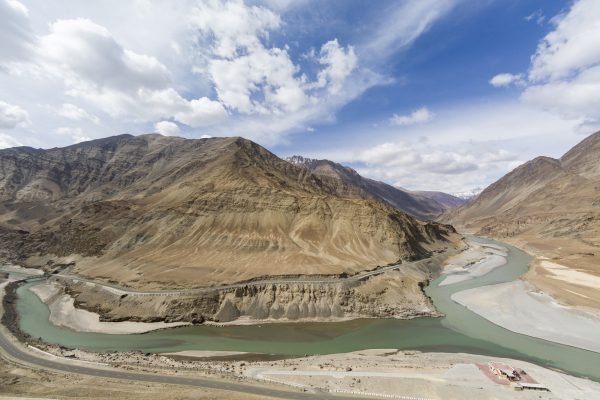South Asia, home to more than 1.9 billion people, is a land of stark contrasts — lush monsoons and chronically scarce drinking water, abundant rivers and empty wells, and the deep-rooted environmental agendas of a dozen nations nestled against one another. The Indus, Ganga and Brahmaputra rivers support life for hundreds of millions, but mismanagement of their resources is fanning tensions, worsening the impact of floods, and risking regional stability. As climate change amplifies floods and droughts — Pakistan’s 2022 floods displaced 33 million, while India’s 2019 drought left 50 million parched — South Asia is experiencing a hydro-political crisis. If oil can bring the Middle East together in conflict, can water bring South Asia together in peace? The solution is a daring, even radical idea: a ‘Water NATO’, a regional alliance based on the principles of mutual defence, ensuring the collective water security of an entire region through joint disaster response, common water quality standards, and the sharing of technologies.
The rationale for a Water NATO hinges on the region’s common vulnerabilities. The rivers of South Asia have caused riparian disputes, including the Indus between India and Pakistan, and the Teesta and Ganga between India and Bangladesh. According to climate data and the Intergovernmental Panel on Climate Change (IPCC), which has predicted unpredictable monsoons due to glacial melting, river flow in South Asian will decrease by 20-30% by 2050. The World Health Organisation (WHO) estimates that as many as 600 million South Asians live without decent potable water, with 1.2 million deaths a year from waterborne diseases. Without cooperative governance, these stressors risk escalating into conflict. Similarly, the India-Pakistan wars in 1965, 1971, and 1999, amid Indus water tensions, are reminders that water disputes can intertwine with security crises. The latest example is the Pahalgam Islamist terrorist attack, which put IWT on ‘Abeyance.’ A Water NATO could defuse such flashpoints by fostering trust and shared accountability between the countries in South Asia.
The water quality is a serious issue. India’s Central Pollution Control Board says the Ganga, holy to millions, gathers 1.5 billion litres of untreated sewage per day along its course. Pakistan’s Indus is also defiled, with 80% of its water too toxic to drink. A Water NATO might impose regional water quality standards
A Water NATO would focus on collective disaster response. The 2022 Pakistan floods, resulting in $30 billion worth of damages, and India’s 2018 Kerala floods, totalling $4.4 billion in losses, highlight the lack of preparedness in the region. An alliance with mutual aid similar to NATO’s Article 5 could activate emergency-response teams, money and resources quickly across borders. Imagine Indian engineers helping Pakistani flood victims or Bangladeshi hydrologists responding to landslides in Nepal. In 2023, Bangladesh’s early warning systems saved thousands during Cyclone Mocha; scaling that expertise regionally could save millions. A centrally managed disaster fund, financed by member states as a share of GDP, could leave members with equitable burden-sharing and less dependence on lumbering global assistance.
Another critical priority is the quality of the water. According to India’s Central Pollution Control Board, the Ganga, holy to millions, gathers 1.5 billion litres of untreated sewage per day along its course. Pakistan’s Indus is also defiled; 80% of its water is too toxic to drink. A Water NATO might impose regional water quality standards, based on the EU’s Water Framework Directive, including binding targets for reducing pollution, like Singapore has for the past few decades. Some joint monitoring stations, operated by scientists from member states, could verify compliance, and violations would carry penalties. Technology sharing would amplify impact: India’s low-cost water purification systems could benefit rural Pakistan, while Nepal’s micro-hydropower tech could power clean water initiatives in Bhutan.
Security implications of ignoring cooperative water governance are dire. Water scarcity is a proven conflict multiplier. A 2018 report by the Pacific Institute found at least 60 such water disputes worldwide since 2000, including violent confrontations in India’s Cauvery basin. South Asia’s two nuclear-armed neighbours, India and Pakistan, are at particular risk — their 1960 Indus Waters Treaty is strong, but not suitable for climate-induced shortages. Without a Water NATO, unilateral dam projects — say China’s Brahmaputra dams — could easily lead to diplomatic or even military crises. Added urgency comes from Chinese upstream control of Tibetan rivers, which provide 20 per cent of South Asia’s water. Hence, a regional alliance is important for fair water sharing.
Without a Water NATO, unilateral dam projects like China’s Brahmaputra dams could lead to diplomatic or even military crises. In addition, China’s upstream control of Tibetan rivers, which provide 20% of South Asia’s water, makes the need for a regional alliance for fair water sharing all the more urgent
The security consequences of neglecting cooperative water governance are severe. Water shortage is a well-established conflict enhancer. Nearly 60 water-related conflicts have occurred around the world since 2000, including violent clashes in India’s Cauvery basin, according to a 2018 study by the Pacific Institute. India and Pakistan, which share water under the 1960 Indus Waters Treaty, are particularly at risk. While the treaty has proved durable, it lacks provisions addressing climate-induced shortages. Without Wild Card NATO, unilateral dam projects — India’s Kishanganga, or China’s dams on the Brahmaputra — could, on their own, ignite diplomatic or military crises. China’s upstream control of Tibetan rivers, which provide 20% of South Asia’s water, adds urgency as a regional alliance could counterbalance external pressures and ensure equitable water sharing.
A single plan might unlock billions of dollars in savings from shared infrastructure and disaster avoidance. It’s time to establish a Water NATO. By 2050, South Asia’s population is expected to hit 2.4 billion and water demand is expected to double, according to the UN. Climate change will make floods, droughts and displacement worse, putting food security at risk in South Asia, which produces a quarter of the world’s rice. All of it is dependent on monsoon-fed rivers.






